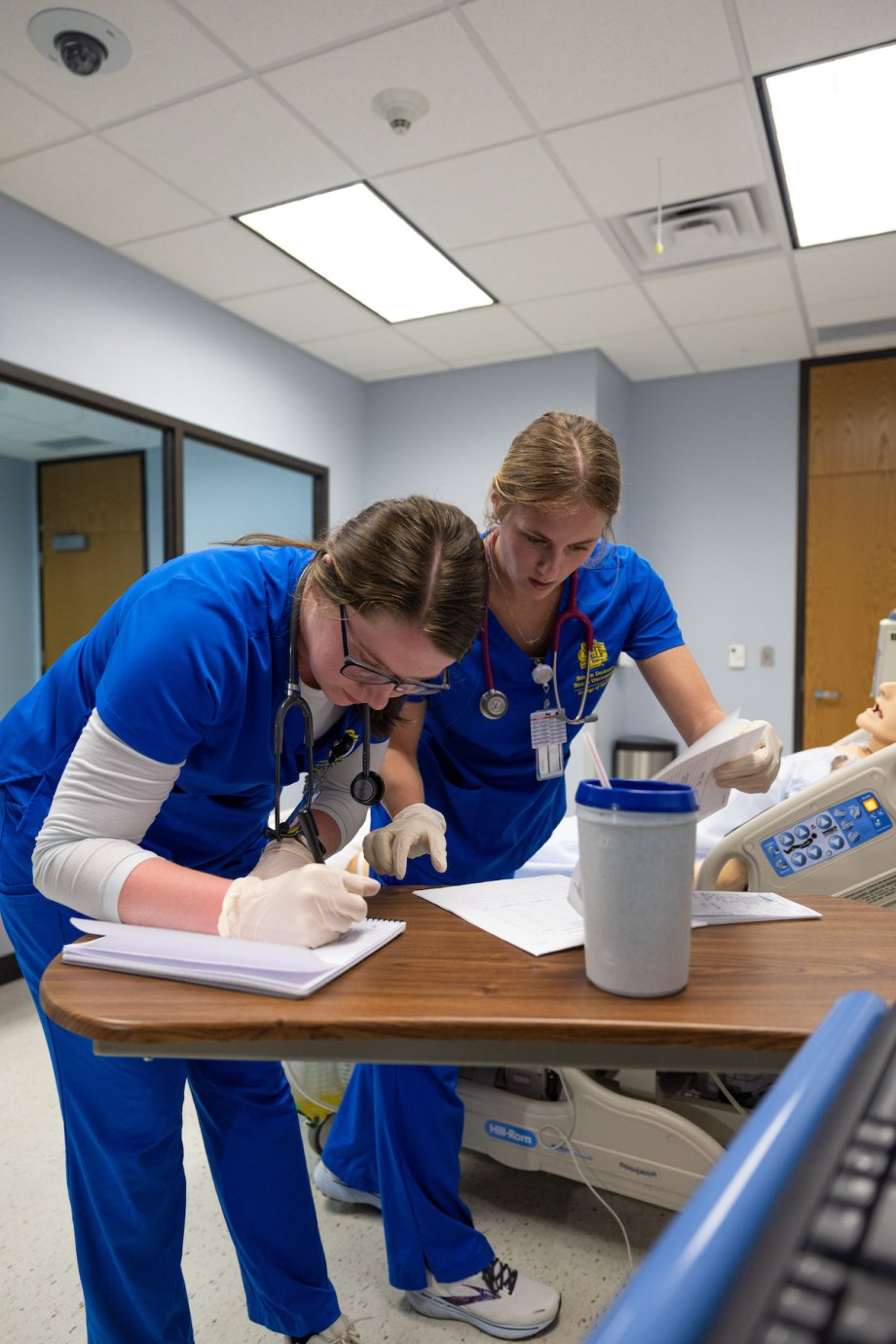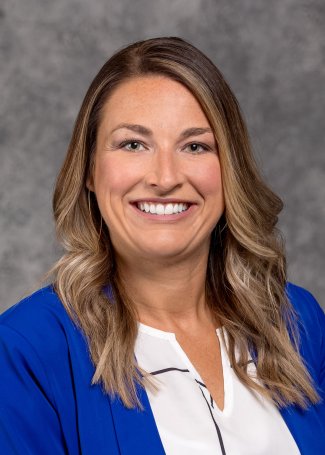
Health care simulations are a crucial tool for filling in the gaps in nursing education, and South Dakota State University's College of Nursing is one of the region's leaders in both simulation education and simulation research.
Simulations are still, however, an emerging tool that continues to undergo updates and changes needed for the continuous improvement of learning outcomes for future health care professionals. A new faculty member in SDSU's College of Nursing — Brittany Brennan — is working to move the field of simulation education forward with a project for the International Nursing Association of Clinical Simulation and Learning.
"I am on the committee that is working on updates to the simulation facilitation standards," Brennan, an assistant professor in the college, said. "This is an extensive project, but eventually we will publish new standards for the facilitation of simulation."

As part of the multi-year project, Brennan and her colleagues will sift through all available research on the impact of simulation facilitation on learning outcomes. They’ll use that research to establish an updated set of standards that will be used by accredited simulation centers around the world.
The research team will look through more than 6,000 research papers to describe the science underlying simulation facilitation and its impact upon health care learners. The findings will be used to identify the criteria for the updated set of standards.
This work is needed to ensure that accredited simulation centers — like SDSU's Healthcare Simulation Center — are following the best practices available for simulation education.
This is in sharp contrast to a decade or so ago, when simulations were a relatively new tool for helping educate future health care professionals. Their purpose was to give students a chance to experience clinical situations and scenarios without having to work with actual patients. They were especially crucial for helping students learn and deal with unique or rare situations that can be hard to mimic in clinical settings. But, as Brennan explains, simulation scenarios back then didn't follow best practices or a set of standards, which created chaotic, anxiety-ridden situations for the students.
"Students got a chart, went in a room and then were told to more or less figure it out," Brennan said. "That doesn't provide a very safe learning environment and actually created a huge amount of anxiety to the point that students weren't learning very much."
Eventually, leading simulation associations developed a set of standards and processes, through the work of researchers like Brennan, and in turn, the scenarios became less chaotic, leading to improved learning outcomes.
"The simulation standards are important because they laid the groundwork for these different phases of simulation that are now expected today," Brennan. "So now, there's a prebriefing standard, which is the first phase of a simulation where we ensure students are adequately prepared to participate in a simulation."
The prebriefing process is where Brennan had focused much of her previous research. While in pursuit of her doctorate at SDSU, she noticed that the available literature did not identify prebriefing standards and implementation strategies for simulation facilitators to conduct prebriefing in ways that were considered "best practices."
In a 2022 research paper titled "The impact of self-efficacy based prebriefing on nursing student clinical competency and self-efficacy in simulation: An experimental study," Brennan conducted a study that showed a certain prebriefing method — the Self-Efficacy Prebriefing Model (SEPM) — to be effective at promoting student clinical competency and confidence.
This work underlines the evolution of simulation education as a whole and the need for simulation research. As Brennan previously noted, when she started her dissertation work, prebriefing wasn't widely used in the simulation process. Now — thanks to the set of simulation standards — prebriefing, along with the simulation and debriefing, are essential phases of simulation education and are used at accredited simulation centers.
"Dr. Brennan is an excellent addition to our team of simulation experts," said Sarah Mollman, associate dean for research for SDSU's College of Nursing. "Her dedication to innovation and evidence-based education is of the upmost importance as we teach the next generation of nurses in a manner that not only prepares them for a variety of health settings, but also does so in a safe learning environment."
Brennan received her doctorate in nursing from SDSU in 2021 and was hired as a full-time faculty member in 2022. Currently, she is teaching nursing classes in the college while also working on the aforementioned standards project with the International Nursing Association of Clinical Simulation and Learning. In the future, Brennan hopes to collaborate with faculty members in SDSU's Jerome J. Lohr College of Engineering to conduct research on the use of eye-tracking devices in virtual reality simulations.
Prior to her arrival in Brookings, Brennan worked as a registered nurse in Watertown's Prairie Lakes Healthcare System Critical Care Unit and was also a nursing instructor at Lake Area Technical College.
- Contact:
- Telephone number: 605-688-6161
Republishing
You may republish SDSU News Center articles for free, online or in print. Questions? Contact us at sdsu.news@sdstate.edu or 605-688-6161.

